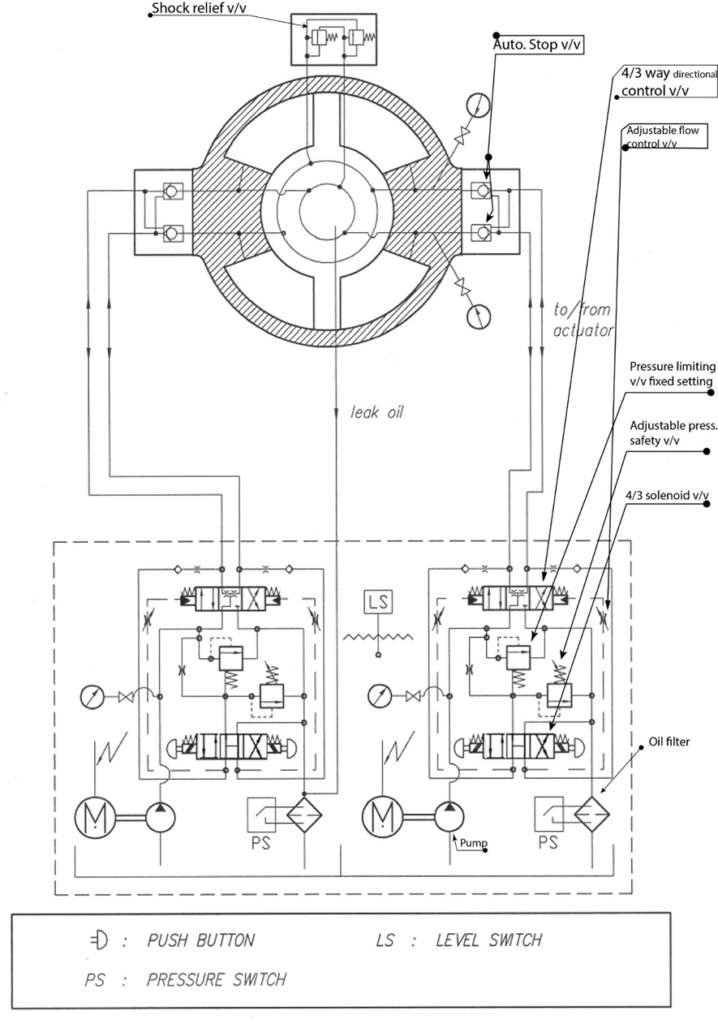Rotary vane
.rotary vane .rvsg
The rotary vane unit is normally fitted with three fixed and three moving vane, and permit a total rudder angle of 70° i.e. 35° in each direction. If larger rudder angle movement is required then only two fixed and two moving vanes will be used, which will permit an angular movement of the rudder of 130°. However the force on the vanes will have to be increased for the same torque as given by 3 vanes.

Steering Methods:
Follow Up” Steering
This is the normal method of steering and involves the feedback of steering angle to the helm. This is suited to both manual and automatic operation.
The ships heading may be set into the autopilot which can then compare the actual to desired heading and adjust the rudder angle to suit

“Non-follow Up” Steering : NFU system, NFU steering
Normally used for back up purposes only. Consists of a single lever per steering gear unit, by moving the lever in on direction the rudder will begin to turn, the rudder will continue to turn until the lever is released or it reaches the limit of its operation.

Share this article
Leave a Comment
Comments (0)
No comments yet. Be the first to share your thoughts!